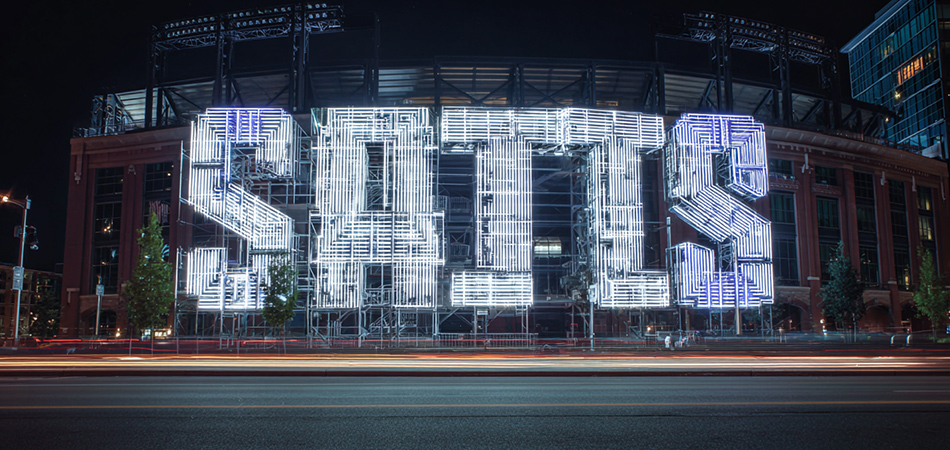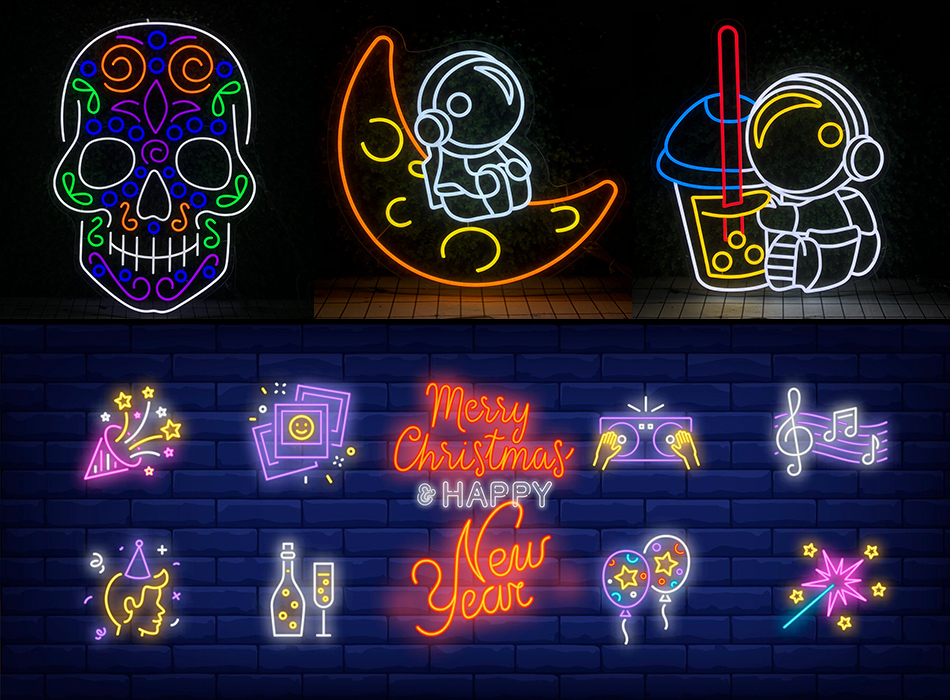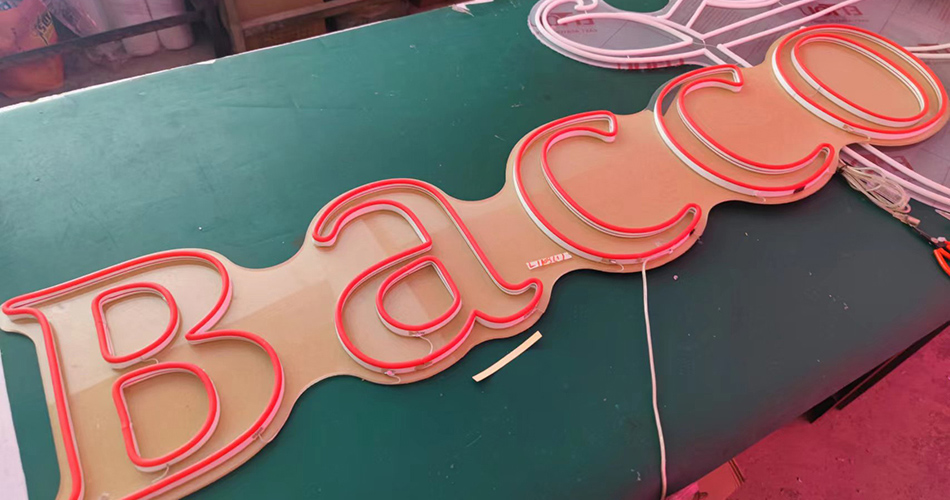Time:2025-07-04
The Dominance of Large-Scale Neon Letters in Stadium Advertising
In the high-stakes world of stadium advertising, where capturing the attention of tens of thousands of spectators and global broadcast audiences is paramount, large-scale neon letters have emerged as a transformative solution. These towering, illuminated installations blend the timeless allure of neon lighting with the grandeur required for iconic sports and entertainment venues. Far more than mere signage, they serve as powerful brand ambassadors, capable of conveying messages with unmatched visibility and emotional resonance. In an era where stadiums are not just athletic arenas but also cultural hubs, large-scale neon letters offer a unique combination of artistic appeal, technological sophistication, and strategic branding, ensuring that brands stand out in the most high-profile settings.

The Technical Blueprint: Crafting Neon Letters for Stadium Environments
Creating large-scale neon letters for stadiums requires a meticulous fusion of engineering, materials science, and lighting technology. The foundation begins with robust structural frameworks, typically constructed from aluminum or steel alloys, designed to withstand extreme weather conditions—high winds, heavy rain, and temperature fluctuations—common in outdoor stadiums. These frameworks provide the necessary support for the neon or LED-neon tubing, which is shaped into precise letterforms or logos.
Neon tubing, made from borosilicate glass, is heated and bent by skilled artisans to form each character, ensuring sharp edges and consistent curvature for optimal visual impact. For even greater durability and energy efficiency, many modern installations use LED-neon hybrids, which replicate the vibrant glow of traditional neon while reducing power consumption and eliminating the risk of gas leaks. The lighting system is integrated with specialized transformers or drivers to ensure stable voltage supply, and advanced control modules allow for dynamic lighting effects, such as color transitions or synchronized illumination during key moments in a game or event.

Design Principles: Balancing Aesthetics and Functionality
Effective design of large-scale neon letters for stadiums hinges on three core principles: visibility, brand coherence, and structural harmony with the venue. Visibility demands that letters are proportioned to be legible from all seating tiers, often ranging from bold sans-serif fonts for readability at a distance to custom typography that reflects a brand’s identity. Color palettes are chosen to contrast with the stadium’s architectural elements—for example, vibrant reds against neutral facades or icy blues against warm lighting—to ensure maximum impact both in daylight and at night.
Brand coherence is achieved by aligning the design with the advertiser’s visual identity, incorporating logos, taglines, or signature colors. Many installations integrate motion sensors or real-time data feeds to update messaging dynamically, such as displaying sponsor names during halftime or showcasing event hashtags in sync with social media trends. Structurally, the letters must complement the stadium’s architecture, whether mounted on exterior facades, suspended from grand canopies, or integrated into interior scoreboard structures, ensuring they enhance rather than disrupt the venue’s aesthetic flow.

Strategic Placement: Maximizing Reach in Stadium Ecosystems
The success of large-scale neon letters lies in their strategic placement across key stadium touchpoints:
Exterior Facades and Entrances: Serving as the first impression for arriving spectators, these installations dominate skyline views, attracting foot traffic and creating photo opportunities for fans. A global brand’s logo in towering neon above a stadium’s main entrance becomes a landmark in itself, reinforcing brand recall long after the event.
Interior Bowl Structures: Hung from the stadium roof or mounted on perimeter boards, neon letters are visible to all seated audiences and camera crews, ensuring consistent exposure during broadcasts. These can highlight sponsor names, team slogans, or real-time updates, such as “PLAYER X SCORES!” during pivotal moments.
Hospitality and Fan Zones: In premium areas like VIP lounges or fan experience zones, smaller-scale neon installations (still large by standard signage) add a touch of luxury, reinforcing brand loyalty among high-value audiences.

Installation and Maintenance: Ensuring Safety and Longevity
Installing large-scale neon letters in stadiums is a complex engineering feat, requiring collaboration between structural engineers, electricians, and signage specialists. Each letter is meticulously anchored to the venue’s framework using 抗震 brackets and corrosion-resistant fasteners, with load-bearing calculations ensuring compliance with international safety standards. Electrical wiring is routed through concealed channels to maintain a clean aesthetic and protect against environmental damage.
Maintenance protocols are equally critical, involving regular inspections of tubing integrity, electrical connections, and structural stability. LED-neon systems, with their longer lifespan and lower maintenance needs, are increasingly preferred for their reliability, while traditional neon installations require periodic gas refills and tube replacements. Smart monitoring systems now allow real-time diagnostics, alerting technicians to issues like faulty drivers or loose mounts, minimizing downtime and ensuring the signs remain operational for major events.
The Business Case: ROI and Brand Equity in Stadium Advertising
Investing in large-scale neon letters offers tangible returns for brands:
Massive Audience Reach: Stadiums host millions of annual visitors and reach billions via TV and digital broadcasts, making neon installations a cost-effective platform for global brand exposure. The iconic nature of neon ensures that brands are associated with grandeur and permanence, enhancing perceived value.
Emotional Engagement: Neon’s warm, nostalgic glow creates a visceral connection with audiences, differentiating brands from digital-only ads. Fans often photograph and share neon installations on social media, organically extending the brand’s reach through user-generated content.
Flexible Messaging: Advanced control systems allow brands to rotate messages during different events, supporting multi-campaign strategies. A single installation can promote a product launch during a football match and a charity initiative during a concert, maximizing utility.
Innovations Shaping the Future of Stadium Neon Advertising
The field is evolving with technologies that enhance impact and sustainability:
Interactive Neon Installations: Some stadiums now feature motion-sensitive neon letters that react to crowd noise or player actions, creating immersive experiences. For example, a brand’s name might pulse in sync with a goal celebration, deepening fan engagement.
Sustainable Materials: Eco-conscious brands are adopting neon letters with recycled aluminum frames and energy-efficient LED-neon technology, reducing carbon footprints without compromising brightness. Solar-powered auxiliary systems are also being tested for remote stadiums.
Augmented Reality Integration: Forward-thinking installations include AR markers within neon letters, allowing fans to unlock exclusive content—such as player interviews or 3D brand visuals—by scanning the signs with mobile apps, bridging the physical and digital worlds.
Selecting the Right Partner: Key Criteria for Stadium Neon Projects
Choosing a provider for large-scale neon letters requires rigorous evaluation:
Engineering Expertise: Look for partners with a proven track record in stadium installations, demonstrating mastery of structural load calculations, weatherproofing, and electrical safety.
Creative Capability: The ability to translate brand identities into iconic neon designs, offering services from initial 3D modeling to artisan tube-bending, ensures the final product aligns with strategic goals.
Compliance and Support: Ensure the provider adheres to international standards (e.g., UL, CE) and offers comprehensive post-installation support, including emergency repairs and software updates for dynamic systems.
Case studies and portfolio reviews can reveal a provider’s ability to handle complex projects, such as the precision required for curved stadium facades or the scalability needed for multi-venue campaigns.